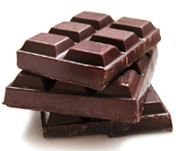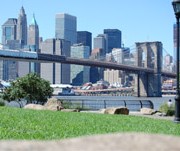In a recent survey by the world’s largest travel review site, TripAdvisor, Cactus is delighted to see that it offers language vacations in ALL of the top 10 food and wine locations in Latin America. From succulent steaks to sumptuous seafood and delectable chocolate, it seems the continent has it all – so book your trip, y ¡buen provecho!
1. Buenos Aires, Argentina
It’s probably not ideal to visit Argentina’s vibrant capital if you’re vegetarian – that said, the city’s Italian roots ensure an ample supply of Italian restaurants offering meat-free pizza and pasta. But it’s with all things beef that the city really comes into its element. If you’re after a melt-in-the-mouth steak washed down by a world-class Malbec at a giveaway price, then Buenos Aires is the place for you. You are literally spoilt for choice with ‘parrillas’ offering an array of grilled cuts of meat – plus intestines, if that’s your thing. All cooked very simply as that’s all it needs; the hardest decision will be choosing which delicious local wine to accompany your platter.
Spanish courses in Buenos Aires
2. Cuyo, Argentina
The Cuyo region of Argentina is located on the eastern slopes of the Andes and comprises the province of Mendoza, an area boasting spectacular mountains alongside fertile wine-growing land – this region on its own producing nearly two thirds of the country’s wine. The provincial capital of Mendoza is easily one of Argentina’s most livable cities, attracting people from afar with its active cultural scene, thriving nightlife and accessibility to mountain-based adventure sports such as white water rafting and skiing. Be reassured there is ample opportunity to replenish your energy at the end of the day, huge slabs of steak in wait and yes, you’ve guessed it, a mouth-watering selection of wine from the nearby vineyards.
Spanish courses in Mendoza
3. Lima, Peru
Traditionally best known for being home to the lost city of the Incas, Machu Picchu, Peru is now gaining something of a reputation for its cuisine, and nowhere more so than in its capital, Lima. The food here is a reflection of the city’s rich cultural history, a mix of Spanish, African and Asian influences that manifests itself in spicy creole dishes and Chinese-inspired ‘chifa’ cuisine. With its coastline generously supplying the fishing industry, the country’s signature dish is ‘ceviche’, a tangy plate of raw fish and shellfish marinated in lime juice and hot peppers; head to a cevichería to sample ceviche like the locals, and finish up with a swift pisco sour, the national cocktail of local grape brandy and egg white. Other typical foods worth trying include anticuchos (marinated beef hearts), cau cau (tripe stew), papas a la huancaina (a potato and cheese dish) and, to round it all off, alfajores (a sweet filled pastry).
Spanish courses in Lima
4. San Carlos de Bariloche, Argentina
Argentina does it again with an impressive third appearance in the top four. And although you can of course get your fill of steaks and wine here, Bariloche has another string to its bow: chocolate. Not what you would expect, perhaps, from this beautiful Patagonian city in the foothills of the Andes, a major centre for skiing, trekking and mountaineering – yet the perfect treat to re-fuel after a day’s outdoor activities. Stemming back to the arrival of European settlers – notably Swiss and Italian – in the late 1800s, Bariloche’s chocolate industry has flourished ever since, and there are dozens of chocolate shops all over the city tempting you with their creations. It would be rude not to indulge, after all, in the chocolate capital of South America!
Spanish courses in Bariloche
5. Santiago de Chile, Chile
Chilean food tends to be quite meat- and seafood-based, the latter thanks to its long coastline which provides plentiful fresh ingredients for dishes such as pastel de jaiba (crab tart), mariscal (seafood stew) and ceviche (marinated raw fish and seafood). More hearty fare includes parrillada (barbecued meat), arrollado huaso (pork steak rolled with red chilli), empanadas (pastries filled with a mix of onion, beef and boiled egg) and pastel de choclo (a tart made from ground corn and filled with a mix of onion and beef or chicken). Being the fifth largest exporter of wine in the world, it goes without saying that wine is the main drink in Chile and you will be presented with a fine choice to accompany any meal that you sit down to.
Spanish courses in Santiago de Chile
6. Cusco, Peru
When it comes to eating, the ancient city of Cusco does not disappoint. With strong indigenous roots, year of colonial life and a regular influx of international tourists, the cuisine of this city high in the Andes is both exciting and delicious. Typical dishes include pepian de conejo or cuy (rabbit or guinea pig cooked with onion, garlic and peppers – guinea pig is a very traditional food item in Cusco), adobe and chicharrones (fried pork rind), humitas (sweet corn muffins filled with cinnamon and raisins, steamed in corn leaves), tamales (similar to humitas, but filled with meat) and stuffed chilli pieppers. And to wash it all down? The local Cusqueña beer is a great choice, or a pisco sour for something a bit stronger, and chicha if you want to do as the locals do; this fermented corn beverage comes in various strengths and is best sampled in one of Cusco’s many thriving chicherías.
Spanish courses in Cusco
7. Cartagena, Colombia
Coming in at number seven is Colombia’s beautiful Caribbean port town of Cartagena. With its coastal location it comes as no surprise that seafood tops the list of must-try dishes, ceviche (marinated raw fish and seafood) and caldero (a fish and rice dish) being popular choices. Meat also features in plenty of dishes (try ‘viuda’, a mixture of beef, pork or chicken with steamed vegetables) and soups such as sancocho and mote de queso are well worth trying. Again, Cartagena has a lot to thank its location for, as tropical fruit juices are extremely easy and cheap to make, providing a delicious and healthy refreshment under the hot Caribbean sun. Melon, mango, tamarind and papaya are just some of the flavours to choose between – try something different every day of your stay!
Spanish courses in Cartagena
8. Bogota, Colombia
Colombia’s capital city is the country’s second entry in the top 10, this time for a particular beverage rather than its food though. And that beverage is nothing other than hot chocolate, or ‘chocolate santafereño’ as it’s known in Bogota. Now I am something of a hot chocolate addict but I’ve never tasted hot chocolate like I have in Bogota; here, the hot chocolate is whipped up rich and creamy, and then cubes of queso blanco, a salty cheese, are dropped in and allowed to melt. The overall result is a delectable creamy drink that’s both salty and sweet, perfect for those cold Andean mornings or as an after-dinner treat.
Spanish courses in Bogota
9. Rio de Janeiro, Brazil
Rio earns its place in the top 10 foodie destinations of Latin America for the sheer range of food on offer here, thanks to influences from all over the world plus a number of excellent local dishes that never go out of fashion. Feijoada is the hearty national dish and is both filling and economic, consisting of staples such as rice, beans and sausage. Meat-eaters should head for a churrascaria, where you can eat your fill of meat and seafood, while on the move you might like to grab a lighter snack such as a salgadinho, a small savoury filled pastry. And you don’t have to have been to Brazil to have tried its national drink, the caipirinha, a popular cocktail in bars worldwide; made with cachaça, sugar, lime and water, it is delicious and refreshing, and a must in any Rio bar.
Portuguese courses in Rio
10. Panama City, Panama
Bordered by sea on both sides, Panama is spoilt for choice when it comes to fish and seafood. You will find corvina (sea bass) on the menu everywhere, used in many recipes and also served simply raw and marinated as ceviche. Other staples to look out for include sancocho (a delicious chicken and vegetable broth), filled or topped tortillas (which are thicker than you may have tasted in other countries), arroz con guandu (a popular side dish of rice cooked with beans and spices) and tropical Central American fruits. ¡Delicioso!
Spanish courses in Panama City








